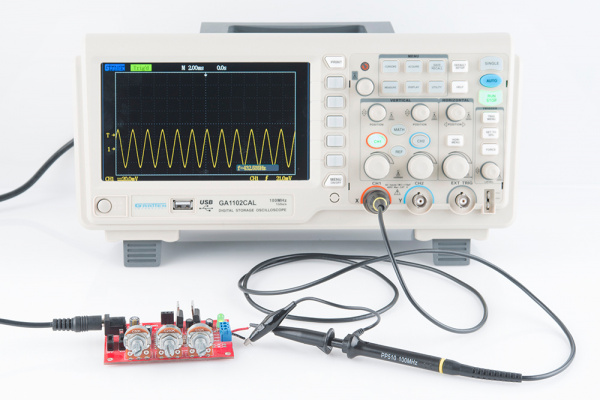How to Use an Oscilloscope
Introduction
Have you ever found yourself troubleshooting a circuit, needing more information than a simple multimeter can provide? If you need to uncover information like frequency, noise, amplitude, or any other characteristic that might change over time, you need an oscilloscope!
O-scopes are an important tool in any electrical engineer's lab. They allow you to see electric signals as they vary over time, which can be critical in diagnosing why your 555 timer circuit isn't blinking correctly, or why your noise maker isn't reaching maximum annoyance levels.
Covered in This Tutorial
This tutorial aims to introduce the concepts, terminology, and control systems of oscilloscopes. It's broken down into the following sections:
- Basics of O-Scopes -- An introduction to what, exactly, oscilloscopes are, what they measure, and why we use them.
- Oscilloscope Lexicon -- A glossary covering some of the more common oscilloscope characteristics.
- Anatomy of an O-Scope -- An overview of the most critical systems on an oscilloscope -- the screen, horizontal and vertical controls, triggers, and probes.
- Using an Oscilloscope -- Tips and tricks for someone using an oscilloscope for the first time.
We'll be using the Gratten GA1102CAL -- a handy, mid-level, digital oscilloscope -- as the basis for our scope discussion. Other o-scopes may look different, but they should all share a similar set of control and interface mechanisms.
Suggested Reading
Before continuing with this tutorial, you should be familiar with the concepts below. Check out the tutorial if you want to learn more!
- Voltage, Current, Resistance and Ohm's Law
- How to Use a Multimeter
- Analog vs. Digital
- Alternating Current (AC) vs. Direct Current (DC)
